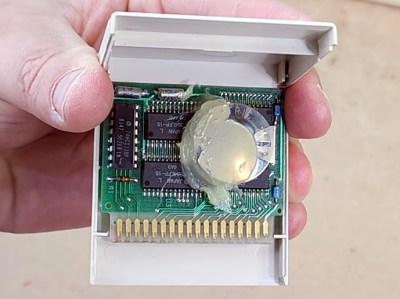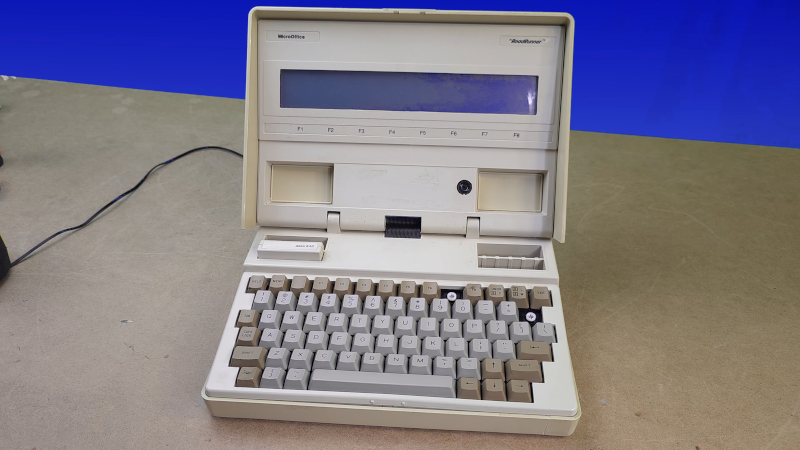How many lines do you need on a CP/M terminal? More is usually better, of course, but the MicroOffice RoadRunner managed with an 8-row, 80-column LCD screen. That may sound anemic, but in 1983, it was high-tech, as was the RoadRunner, and [Tech Time Traveller] tells us about them in a recent video you can see below.
The intro to the video shows some really strange old laptops before it gets to the RoadRunner. The machine used a Z80 work-alike CPU and a form of CP/M with some organizer functions. The machine didn’t have floppies or other disk storage, but did have four cartridge slots that could hold more memory, a spreadsheet, BASIC, or a text editor. The memory cartridges were static RAM with battery backup, so they retained data when you pulled them from the slot. Assuming the battery didn’t die.

Unfortunately, this particular machine suffered some shipping damage. In addition to the cartridges, it also had a removable battery and modem. At around the eight-minute mark, the case comes off, and inside are — surprise — more internal cartridges.
While MicroOffice isn’t a household name today, it was founded by a former Exxon executive and tapped a CEO and investor from Timex. It was funded by the likes of Olivetti. The computer rolled out in late 1983 and lived until Telxon bought MicroOffice in 1985.
Attempts to run Zork were not fruitful. There really wasn’t enough memory, and file transfer was a bit wonky. If you want a modern Z80 laptop, we know of one with 16 cores. As clunky as the RoadRunner looks, it still beats the old suitcase computers.
















Back then I had just upgraded my ZX81 for a C64, of which I’d eventually use GEOS to write papers for school. Or use their built-in spreadsheet.
Though it was an exciting time for computers, the major issue I had as you could not easily transfer work from a commodore to an apple, or to a MS-DOS based machine. Seems like there would have been a market for a RS-232 based drive just for that purpose. You might have been limited to ASCII files, but that would have been ok.
I did in fact use rs-232 frequently for that purpose, but as a straight connection not as storage. My recollection was that you could run relatively simple commands, once you knew the magic incantation, to transfer a file on disk to/from the serial port, at least on MSDOS and C64.
Back in the day, the Kermit utility/program was kind of popular for null-modem use.
At least on CP/M and MS-DOS systems.
It’s benefit was its tiny size, I think.
It could be manually typed in via hex editor or debug program.
the epson px-8, a cp/m machine with an 8-line display like this one, could use external 3.5″ floppies that spoke rs-232. not limited to ascii files; actual bona-fide cp/m disk storage.
the px-8 used a cp/m disk format for its eproms. there were two sockets built into the machine; wordstar was available as “portable wordstar”, a trimmed down version that could work with the 40×8 display and was small enough to fit on a 32k eprom. i suspect this microoffice thingie is similarly treating its cartridges as disks; it might be possible to put just about any cp/m program that could be crammed into a cartridge on the thing.
the px-8 also had an optional wedge add-on that included a ramdisk, another eprom socket that could take larger eproms, and a 300 baud modem.
I have a couple of those displays around. They work with just a little bit extra hardware and wired up to the DPI of a Raspberry Pi. Didn’t get around to make a proper case, so for now it remains a proof of concept.